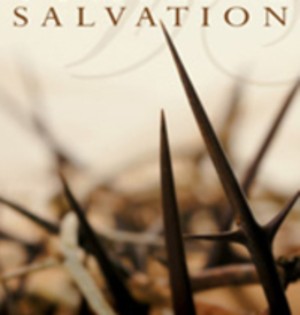How then do we know the Bible is true? We'll spend the next two sessions dealing with this topic so that when you are challenged by this question from any skeptical friend, you can feel more prepared to answer this question that seems quite difficult to field.
Today we will look at how the manuscripts from which the Bible was compiled were collected, examined and interpreted in order to create the Holy Bible, as we know it today. Tomorrow we will look at other sources that point to the accuracy of this book as the very word of God.
One major difference in the Book or Mormon and the Bible of the Christian faith is the number of manuscripts available for examination. There are more than 24,000 partial and complete manuscript copies of the New Testament and some 86,000 quotations from the New Testament found in works of early Christian leaders. The Book of Mormon plates, however, were "taken to heaven" by Moroni, leaving no evidence of the source of Joseph Smith's writings.
Are their variations in the Biblical manuscripts? Yes. Mormons like to cite that there are 150,000 "variants" in New Testament manuscripts. This seems breath-taking until you look into these variations further. There are 99 of which that hold no significance whatsoever. Many involve a misspelled word or a reversal of terms (ie "Christ Jesus" vs "Jesus Christ"). In fact, only about 50 hold any significance at all. Even then no doctrine of the Christian faith or any moral commandment is affected by them (Rene Pache, The Inspiration and Authority of Scripture, 1978, p. 93). In fact, compiling the most probable wording of the original document is not as hard as one might imagine. Here is an example given in Rhodes book:
Manuscript #1: Jesus Christ is the Savior of the whole world
Manuscript #2: Christ Jesus is the Savior of the whole world.
Manuscript #3: Jesus Christ s the Savior of the whole world.
Manuscript #4: Jesus Christ is th Savior of the whole world
Manuscript #5: Jesus Christ is the Savor of the whole world.
Manuscript #2: Christ Jesus is the Savior of the whole world.
Manuscript #3: Jesus Christ s the Savior of the whole world.
Manuscript #4: Jesus Christ is th Savior of the whole world
Manuscript #5: Jesus Christ is the Savor of the whole world.
By looking at these, it is clear that you can decipher what the original text would have been with a high degree of certainty.
It also is noteworthy that, according to Norman Geisler, "There are more [New Testament] manuscripts copied with greater accuracy and earlier dating than for any secular classic from antiquity." However, we have no problem believing that these texts are the "original." For instance, there are only 643 known copies of works from Homer, which are copied at 95% accuracy. There are 10 copies of works from Julius Caesar, with the earliest copy being cited from A.D. 900--their accuracy is completely unknown. With the New Testament, there are over 5000 copies copied at 99+% accuracy with the earliest copies being from approximately A.D. 130.
So we've covered some evidence of the New Testament support. What about the Old Testament? Well, thanks to the Dead Sea Scrolls, there is now much evidence to support the validity of the Old Testament as well. The Dead Sea Scrolls were discovered in the mid-20th century in some caves in Qumran. These manuscripts were written approximately 1000 years earlier than any previously known copies of the texts. One fine example of the consistency is in the book of Isaiah. Dr. Gleason Archer said, "Even though the two copies of Isaiah discovered in Qumran Cave 1 near the Dead Sea in 1947 were a thousand years earlier than the oldest dated manuscript previously known (A.D. 980), they proved to be word for word identical with our standard Hebrew Bible in more than 95 percent of the text. The 5 percent variation consisted chiefly of obvious slips of the pen and variations in spelling." (A Survey of Old Testament Introduction, 1964, p. 19, as seen in Rhodes book, p. 170)
It is also important to know how these ancient manuscripts were copied. They went to incredible lengths to preserve what they believed to be the true and infallible Word of God. Every line, word, syllable, and letter were counted to ensure accuracy. If an error were found, the manuscript would be completely discarded and started again.
It is also noteworthy that Christ used copies of the Old Testament in his teachings--copies that were much older than the original texts, and had no problem with their reliability. Since he was the very Word made flesh, this should tell us something about the accuracy and care in the preservation of the ancient texts used to compile the Bible.
No questions today. Just read and digest. I'll be back for the next installment, which will wrap up our study of the LDS faith.
Study of the LDS Church - 7.3 How to Know/Defend the Bible is True - Part 2






No comments:
Post a Comment